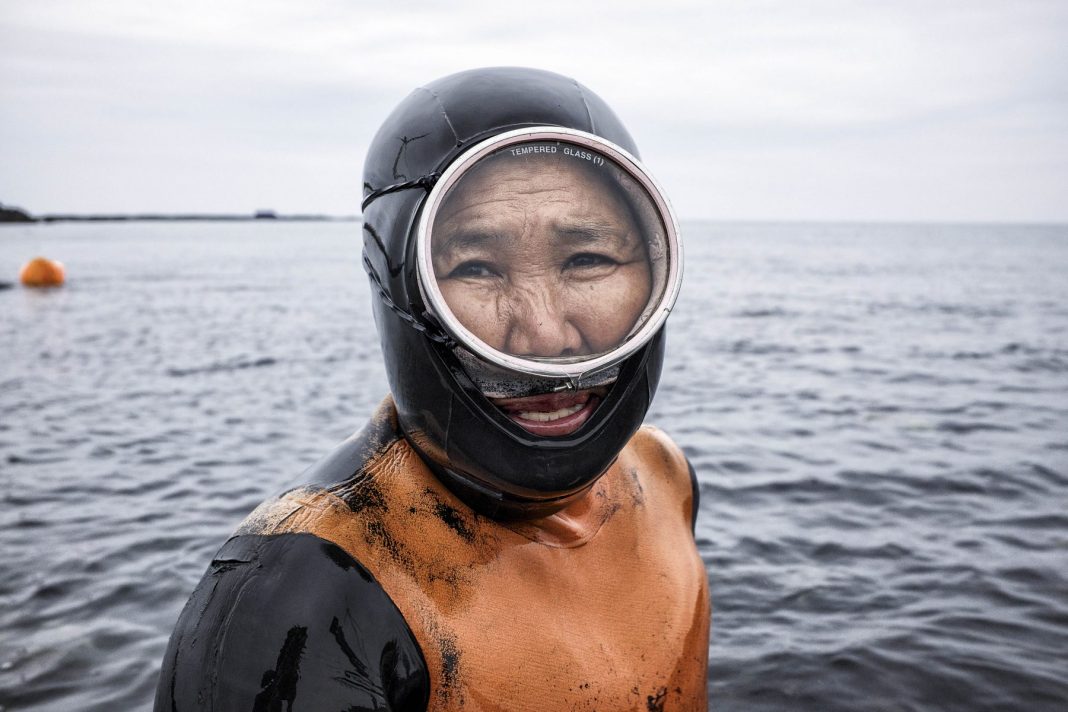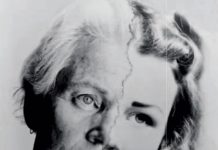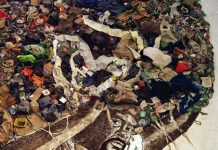The mermaids of the East China Sea – the haenyeo – have historically been fishing by hand in the waters off Jeju Island since before the Second World War. Photographer José Jeuland captures their aquatic lives in his first exhibition on these “sea women”
Text: Rachel Genevieve Chia
In an interview with Asian Geographic, Fujifilm Singapore X-photographer José Jeuland shares his year-long project documenting the culture, history and personalities of South Korea’s female divers, some of whom are well over 80 years old. These haenyeo (“sea women”) make multiple dives a day to catch seafood in ocean depths of up to 20 metres without proper diving equipment.
Q: Why the Haenyeo as a subject? What about them captured your attention?
JJ: Before becoming a photographer I was a professional cross-country marathon runner. It all began when I was signing up for a race in Jeju Island. By coincidence I saw some pictures of the haenyeo on the internet. As a sportsperson, it struck me how active they were in their old age, despite how dangerous the profession was. It was such a unique culture that I was driven to document all of it: their culture, how they work, what they do every day.
The women I photographed were mostly between 50 and 80 years old – some were well over 80. It was very surprising how agile they were once they were in the water. When they’re on the ground, they look old; their bodies are not athletes’ bodies. But once they’re swimming and diving, they have amazing body shapes, like fish.
Some haenyeo even hope to pass away in the sea, instead of peacefully at home. And this does happen, because theirs is such dangerous work. On my first trip to Jeju Island, I photographed a group of about 15 – 20 haenyeo. One woman was 83 and another was 85. They liked me enough, so I was invited to join them again the following day. But I had to go for my race.
Afterward I found out that one of the ladies I photographed died the day of my race. They found her floating in the water.
I admire how the haenyeo are very healthy and active for people of their age. If you look at old people from other countries, they stay at home and watch TV and sit on the couch and lose their mobility and age faster than they are supposed to. They have very little social contact. But these haenyeo are still working, and they are like family. They meet their fellow haenyeo, and joke among each other. So they are ageing, but not cut off from the world yet. I’d like to put these people in the spotlight.
Q: How did you go about taking pictures of the haenyeo? How did you manage unpredictable conditions such as lighting and weather?
JJ: I rented a scooter and rode around the coast until I spotted the haenyeo on the sea. And then I would stop my scooter and photograph them. Eventually I was allowed to dive with them, but I did not have the right equipment. So I returned again.
The second time I went to Jeju there was a very bad storm for several days. I couldn’t take a single photograph as none of the haeneyo could go into the water. I just had to wait. Sometimes if one region of the island had bad weather I’d ride my scooter to another region to see if it had better weather. Nothing was planned. I just loaded everything onto my scooter and went with the flow.
I made three trips to Jeju in total: in May 2016, October 2016, and May 2017. Each time I stayed for about a month, riding the scooter across the island. I visited 20 to 30 diving spots and spent 3 to 5 days at each spot. Sometimes within 5 minutes I could tell the haenyeo at particular spot weren’t keen on having their photos taken, so I would move on to another spot.
Eventually I got to know their work process intimately. I knew what they’d do once they came out of the water: when they’d move the baskets of seafood, how much time they’d take to get ready for a dive, when they’d put the cream on their faces, when they’d clean their masks, when they’d stand up and when they crouched near the ground. So I knew where the photo opportunities were and got my lenses and position ready to capture the best angle in the best lighting.
Q: What are some of the challenges you faced?
JJ: It was difficult because I was by myself and didn’t speak Korean. I used hand signals, body language and eye contact to communicate, and I spent a lot of time with the haenyeo to gain their trust. Sometimes if I would need to ask questions such as the timing of their dives and what days I could return to photograph them, I would ask Korean tourists nearby to translate.
On the first day many of the ladies gave me a hard time because they didn’t appreciate me taking pictures. But as the second and third day passed, they got more welcoming and invited me onto the diving boat with them.
Since I take mostly portraits, I would try to get physically close to the haenyeo. Of course they were not happy about it the first time, so I would back off. The next day I’d try to go closer again, little by little. The difficulty was letting them know I wasn’t just a tourist taking pictures for fun, but doing an actual documentary. My technique was to be very patient.
Sometimes I’d print the pictures and return to show them to the haenyeo. After that, they softened. I like to think that because I gave them a lot of respect, in the way I addressed them and tried to build relationships with them, that they respected me in return. After a while they trusted me and let me come very close to them to take pictures.
On my second trip, some of the ladies even remembered me from my first trip. Photography was easier then; they were more open to me joining them on dives.
Q: What makes a picture stand out?
JJ: To me, it’s about the composition of the photo more than the technique. The photo might be blur or unfocused, but as long as it is aesthetically well composed, the action it captures or the feeling it aims to communicate will come through strongly. Each frame must have a well-placed subject and provide lots of information about the subject. Elements in the background should not distract from the main subject.
Q: What did you want to communicate with your pictures?
JJ: My specialty is close up portraits. For my exhibition I printed the photos in a giant size because I want to show the expression on the haenyeos’ face, and show them in action. I like to show the eyes because they’re the first point of contact between people. But also details such as their wetsuits, and the wrinkles on their face. These tell interesting stories of their own.
This project isn’t finished yet – I want to do more videos and a photobook. And there are similar peoples in Japan called the Ama – maybe I’ll pay them a visit, too.
The full set of Jeuland’s photographs are on display at the Fullerton Hotel, Singapore, from 28 October to 23 November 2017.
[project_links]
[share]















